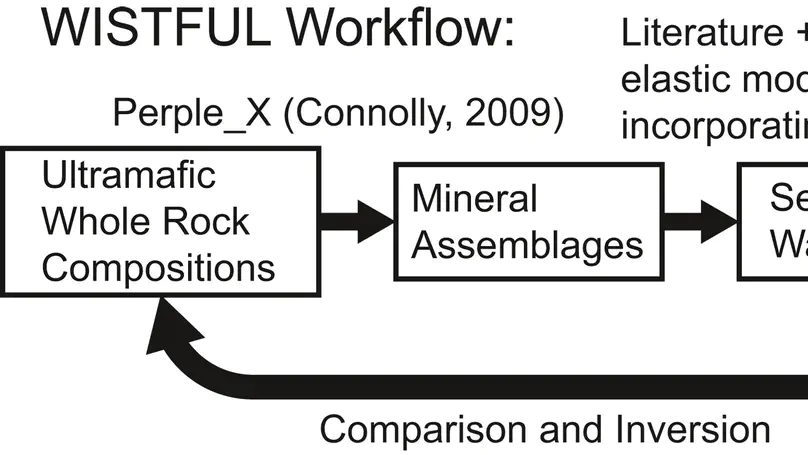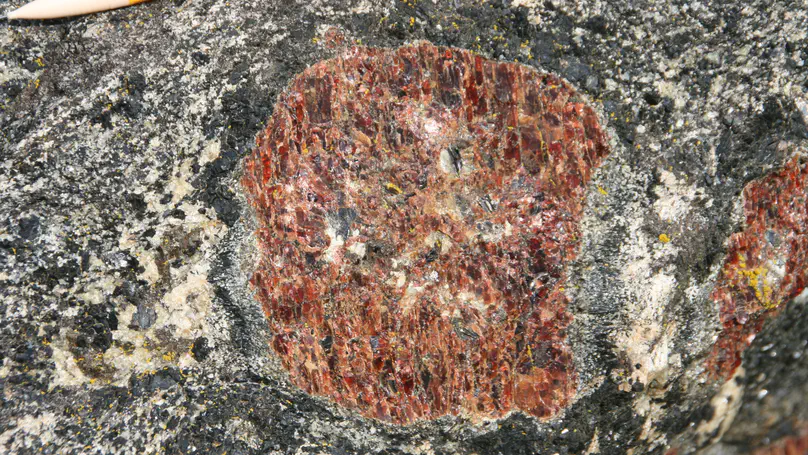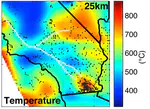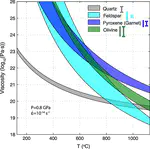Integrating Geophysics and Geochemistry to Understand Tectonics
William Shinevar
NSF EAR Postdoctoral Fellow
University of Colorado, Boulder
About Me
My research focuses on understanding the chemical and physical evolution of continental and oceanic lithosphere over different periods of Earth history. In particular, I am interested in interpreting geophysical data sets, especially seismic wave speed and heat flow, in terms of geochemical and geological processes using interdisciplinary methods like thermodynamic modelling.
Download my CV.- Geophysics
- Petrology
- Crustal Formation and Evolution
- Rheology
- Tectonics
-
PhD in Geophysics, 2021
MIT/WHOI Joint Program
-
BS in Geophysics, 2015
Brown University
-
BA in German Studies, 2015
Brown University
Featured Article

To quantitatively convert upper mantle seismic wave speeds measured into temperature, density, composition, and corresponding and uncertainty, we introduce the Whole-rock Interpretative Seismic Toolbox For Ultramafic Lithologies (WISTFUL). WISTFUL is underpinned by a database of 4,485 ultramafic whole-rock compositions, their calculated mineral modes, elastic moduli, and seismic wave speeds over a range of pressure (P) and temperature (T) (P = 0.5–6 GPa, T = 200–1,600°C) using the Gibbs free energy minimization routine Perple_X. These data are interpreted with a toolbox of MATLAB® functions, scripts, and three general user interfaces: WISTFUL_relations, which plots relationships between calculated parameters and/or composition; WISTFUL_geotherms, which calculates seismic wave speeds along geotherms; and WISTFUL_inversion, which inverts seismic wave speeds for best-fit temperature, composition, and density. To evaluate our methodology and quantify the forward calculation error, we estimate two dominant sources of uncertainty: (a) the predicted mineral modes and compositions, and (b) the elastic properties and mixing equations. To constrain the first source of uncertainty, we compiled 122 well-studied ultramafic xenoliths with known whole-rock compositions, mineral modes, and estimated P-T conditions. We compared the observed mineral modes with modes predicted using five different thermodynamic solid solution models. The Holland et al. (2018, https://doi.org/10.1093/petrology/egy048) solution models best reproduce phase assemblages (∼12 vol. % phase root-mean-square error [RMSE]) and estimated wave speeds. To assess the second source of uncertainty, we compared wave speed measurements of 40 ultramafic rocks with calculated wave speeds, finding excellent agreement (Vp RMSE = 0.11 km/s). WISTFUL easily analyzes seismic datasets, integrates into modeling, and acts as an educational tool.

Our results on peak metamorphic P–T conditions based on thermobarometry, diffusion models, and thermodynamic modelling indicate that the Gore Mountain Megacrystic Amphibolite (GMGA) formed at ultrahigh-temperature (>900 °C) conditions (P = 9–10 kbar, T = 950 ± 40 °C), significantly hotter than previously estimated. Diffusion models pinned by nearby cooling ages require the GMGA to initially cool quickly (9·1 °C Ma–1), followed by slower cooling (2·6 °C Ma–1).
Publications
Contact
- wshinevar@gmail.com
- Benson Earth Sciences, 2200 Colorado Ave, Office 465, Boulder, CO 80301
- Office Hours for Summer 2022 course GEOL1010 TBD



